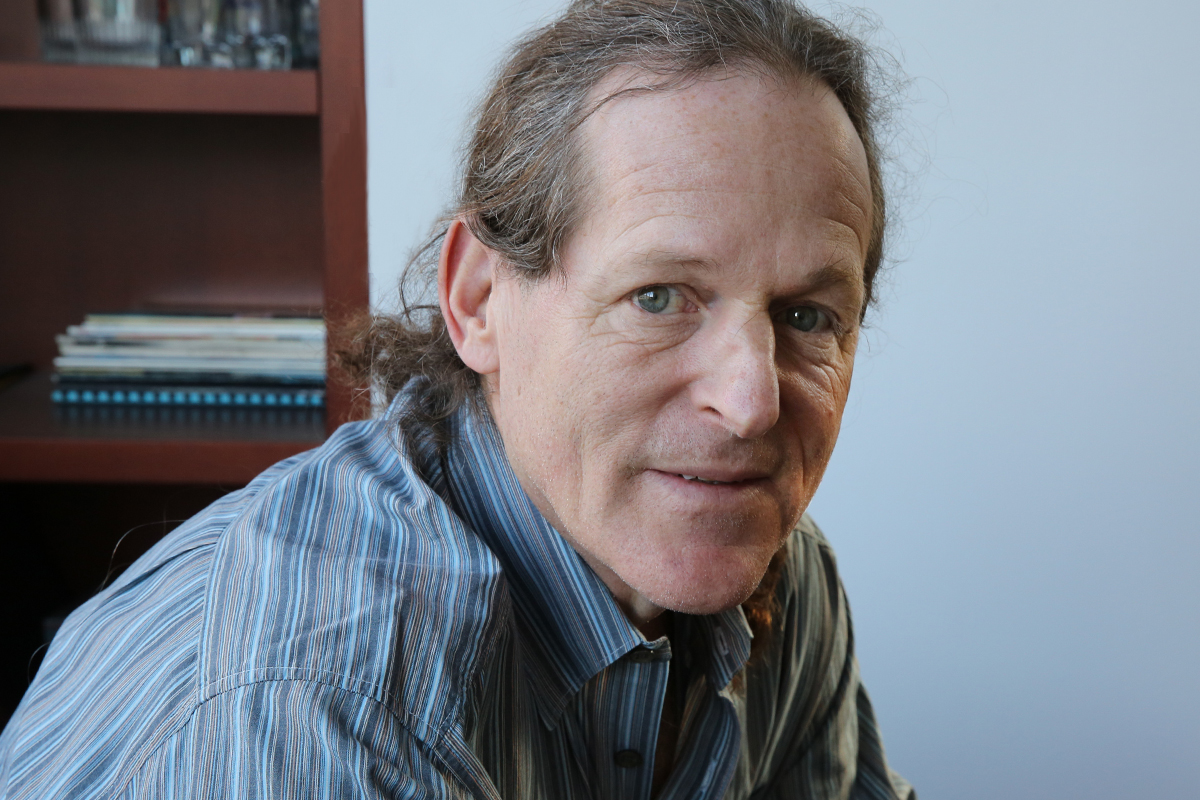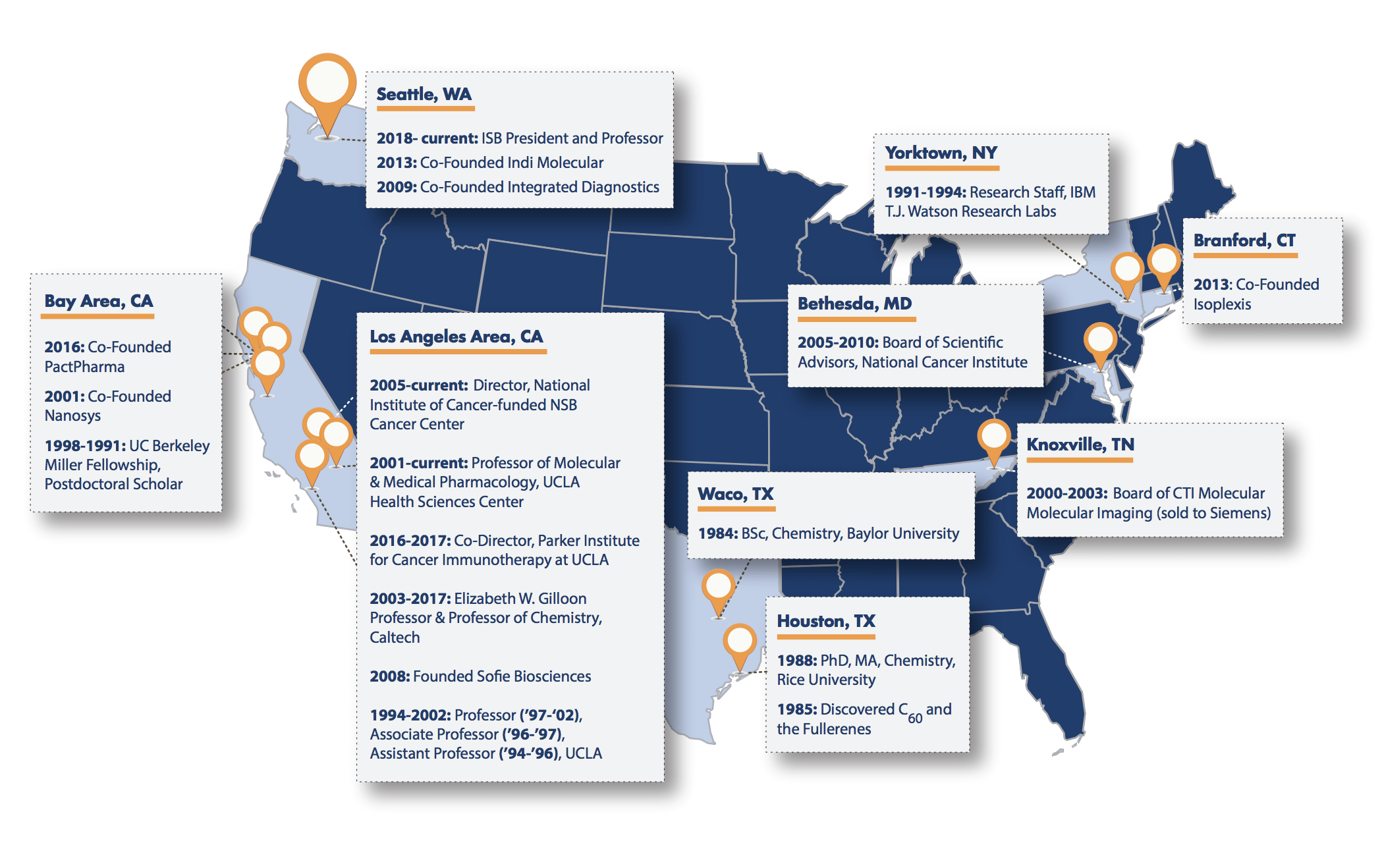Jumping In Head First: Dr. Jim Heath Takes Helm of ISB, Looks Toward the Future
 isbscience.org/news/2018/03/02/dr-jim-heath-isb-president/
isbscience.org/news/2018/03/02/dr-jim-heath-isb-president/
To fully appreciate Dr. Jim Heath’s relationship with Institute for Systems Biology, you have to go back to ISB’s early days — shortly after the research organization was founded in 2000.
“I met Lee when he was at UCLA giving a seminar. I didn’t understand a single thing he talked about, but I understood the systems approach he was taking to the problem he was trying to address,” Heath recalled about his first encounter with ISB co-founder and biotechnology pioneer Dr. Lee Hood. “It was identical to the approach we were taking to a very different problem.”
That common language sparked a relationship that is now approaching two decades.
“I came out a couple times and had some experiences at the institute, and learned a lot from Lee, and (ISB co-founders) Alan Aderem and Reudi Aebersold all chipped in to teach me,” he said.
On January 1, Heath took over the helm as ISB president.
“A few years ago, Lee asked me about whether I would want to come in and take over as president for him, and I said, ‘no, I have a pretty good job at Caltech — I’m a tenured professor — but also I have kids in high school.’ I told him I couldn’t even think about it until my kids graduated from high school.
“So, he came back last year and said, ‘By my calculations, your kids are about out of high school’.”
The timing was inescapable. In addition to his kids moving on to college, ISB had just affiliated with Providence Health, and Heath’s research had moved from chemistry into biomedicine and translational medicine, which Caltech isn’t necessarily the right place for.
“This was a very attractive opportunity,” Heath said. “So, I jumped in — head first.”
‘A Fearless Adventurer’
While new to living in Seattle and the Pacific Northwest, Heath has been a fixture in academia and research for decades. In addition to leading ISB and teaching at Caltech, he has also held professorial positions at UCLA, served as director of the National Cancer Institute-funded Nanosystems Biology Cancer Center, co-directed the Parker Institute for Cancer Immunotherapy, and spun off several successful companies, including Isoplexis.
“Jim Heath is a fearless adventurer in science — a physical chemist having pioneered techniques and explorations in materials, electronics, nanotechnology and now immunotherapy. Jim is energetic, passionate, loyal and incredibly broadly educated in science. He is a wonderful people person,” said Hood, who served as president from ISB’s inception through the end of 2017, and now serves as chief strategy officer of ISB and chief science officer and senior vice president of Providence St. Joseph Health. “I looked across the world of scientists when we were searching for the next ISB leader, and none had all of these qualities that Jim has in spades. I cannot imagine a better ISB president. He will lead us into the 21st century with a beautiful combination of vision and practicality.”
And Heath is bullish on ISB’s future. He noted that ISB was the early pioneer and world leader in bringing intensive computation into the biological sciences, and that the more recent focus on “wellness” is equally prescient.
“The scientific emphasis that the institute is placing on wellness is a big deal,” he said. “Much of biomedical research is about reacting to the presence of disease, often by finding those magic bullets that can cure the disease. Of course, this can be important research. However, we also know that many diseases are complex, and there is no magic bullet. In fact, the complexity of a given disease is often reflected in the diversity of the patients with the disease.” Heath states that this is where the wellness approach becomes significant. “It naturally leads to a proactive and personalized approach to treating patients with the goal of restoring and maintaining health.”

Career highlights: Dr. Jim Heath’s decades-long career has included important professorial positions at Caltech and UCLA and leadership roles at world-renowned cancer centers. On January 1, Heath took over as president of ISB. (Click on the image to open as a PDF.)
A Unique Position
ISB is fortunate, Heath says, in a couple of ways.
“First, the composition of the ISB is highly cross-disciplinary. This is very different from university departments, which are typically organized around specific areas of expertise,” he said. “The most challenging problems that we face as a society do not easily fit into single disciplines. ISB is designed as a problem-solving institute, and our faculty and staff are excited about working together to solve problems.”
Another strength of ISB is its affiliation with Providence St. Joseph Health. “This new relationship represents a major opportunity for both PSJH and ISB, and I am grateful that the Providence leadership saw this opportunity. We should be able to work together to build an extremely effective conduit for translating leading-edge scientific discoveries into treatments that benefit patients,” Heath said.
“We will evolve from an institute for systems biology to an institute for systems biomedicine,” Heath said. “However, strong basic science will remain an ISB hallmark. We just now have the ability to rapidly translate that basic science into the clinic.”
The Future Is Bright
ISB has always been focused on research and education, and Heath sees those outreach efforts as central to the ISB scientific mission.
“Seattle is probably the most electric environment in the world for professionals educated in the STEM fields. We have a responsibility to make certain that our kids can participate in and help continue to build this environment. At ISB, we are developing an exciting set of education initiatives we are deploying around the state in formats that range from grade school programs to medical student training initiatives. Our scientific approach to wellness is providing a highly engaging theme for teaching biology, biomedicine, math, engineering and computer science skills to students of all ages,” Heath said.
Between research, affiliations and partnerships, education and outreach, and timing, Heath thinks ISB is in an enviable position.
“Seattle is an amazing place. I compare us to the city of Florence during the renaissance,” he said. “This is where people come to create, invent, and make the world we live in a better place. In a nutshell, that is the mission of the ISB.”





